If you spend any time on social media you’ll notice a lot of influencers, marketers and companies are using GIFs, emoticons, and memes in their digital marketing. It makes sense. Humans are visual communicators.
Images, especially moving images, catch your eye in a busy social media feed or crammed inbox. They also convey emotions far quicker and often more effectively than a paragraph of text.
In a recent survey on visual content, 69% of marketers said that visuals were very important to their marketing strategy. That said, only 4 percent of these marketers regularly used gifs and memes.
In this article I’ll talk you through how you can use gifs, memes and emoticons in your marketing. I’ll give you tips to make sure you don’t embarrass yourself and provide information you need to engage with your audience. Here we go!

How to Use Emoticons Like a Pro
Emoticons are the smiley face you use in a WhatsApp message to let a person know you’re happy or the devils face you use when you’re annoyed. These images give context to a message – a bit like a visual cue.
You probably use them everyday. They help avoid misunderstandings, and add an element of friendliness to a message.
Emoticons also happen to be a powerful marketing tool. AdEspresso have been using emoticons in their Facebook ads for a while. After running split tests they found that ads with emoticons in the copy normally got a higher click through rate than regular posts.
In the example below the ad with the emoticon had a 241% higher click through rate that the one without.
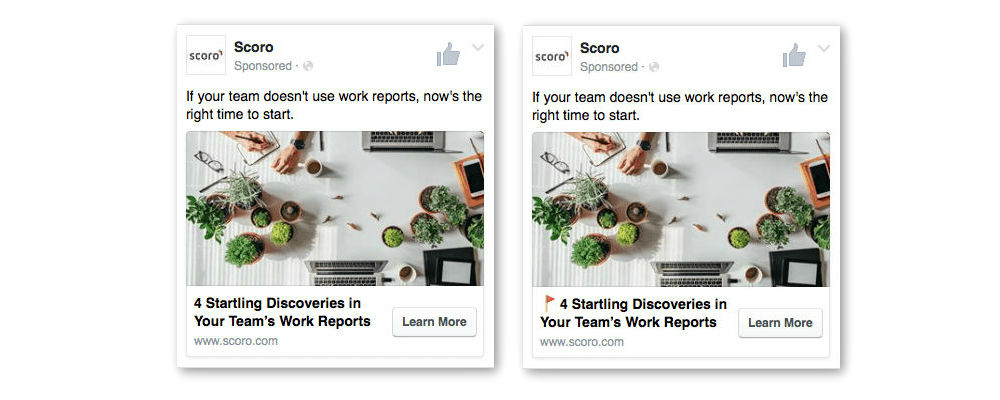
You can also use emoticons in the subject line of an email marketing campaign. Digital Marketer found that using unicodes, basically black and white emoticons, increased open rates by up to 8%.
Another study, conducted by GetResponse, showed very similar results (9%). However it seems that marketers don’t use emoji and emoticons in the email subject lines as often as one might think. Currently, only around 6.48% of emails campaigns include them.
![]()
Emoticons: What to Watch Out For
The main thing to watch out for if you plan to use emoticons in your marketing are double meanings. A good example of this is the eggplant emoticon.
If you’re a middle-aged chef an eggplant is just an ingredient you cook with. For a younger audience an eggplant can have a sexual connotation.
There’s a good article on the Social News Daily website that covers how some emoticons are used differently by age, and country. I created the graphic below to illustrate some of the examples raised in the article.
![]()
If you don’t have a teenager to talk to about your social content there are some tools you can turn to that will help you avoid getting in hot water. Alternatively you could always use Emojipedia to find out what emojis to avoid.
How to Use Memes Like a Pro
A meme is a simple graphic that has a text overlay or accompanying statement. They often have some kind of pop culture reference. Below are a selection of the most popular memes of 2018 according to Thrillist.
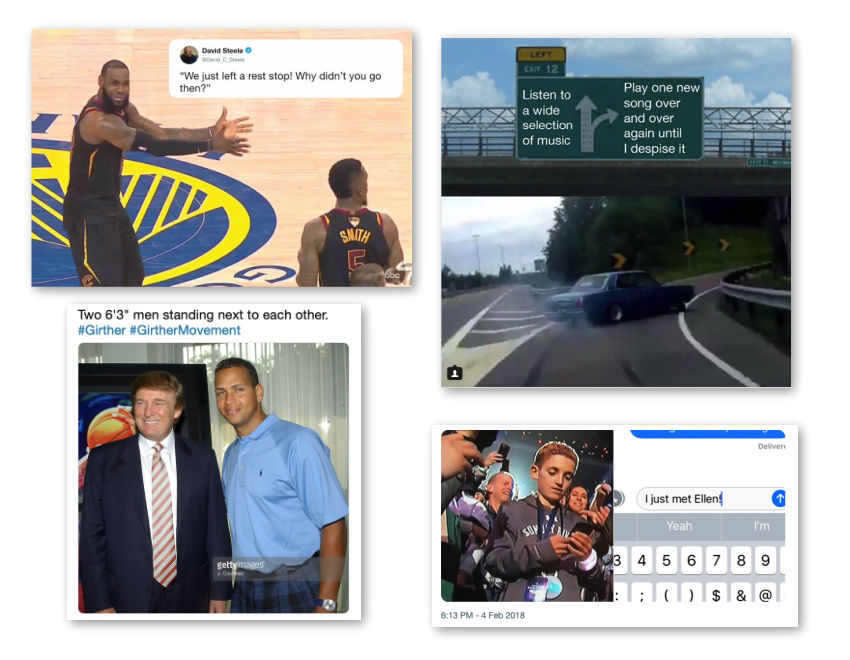
As you can see, a lot of those memes were created with a certain audience in mind. If you don’t understand the context you won’t get the joke. For this reason memes are a great way to connect with your core audience, but will exclude a lot of people.
If you’re comfortable with using memes in your marketing you can also create memes that make fun of your competitors. The social media team at Wendy’s are very good at this.
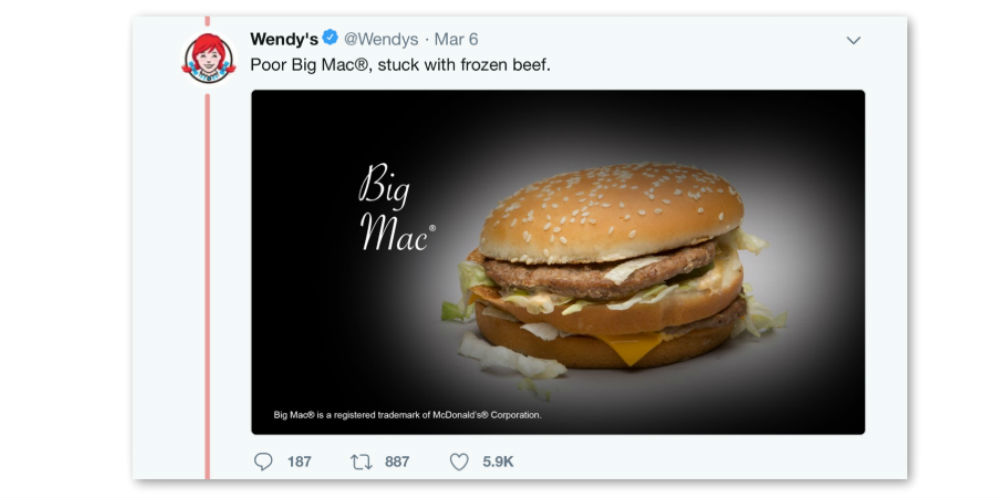
The meme above was created when McDonald’s announced they were switching to fresh beef for their premium burgers. It was a tongue in cheek way of poking fun at the fact that most McDonald’s products would still use frozen meat.
Memes: What to Watch Out For
The obvious problem with memes is that humor is so subjective. Jokes can flop as every comedian knows. When that happens you can become the butt of the joke, which is what happened with this meme posted by McDonald’s.
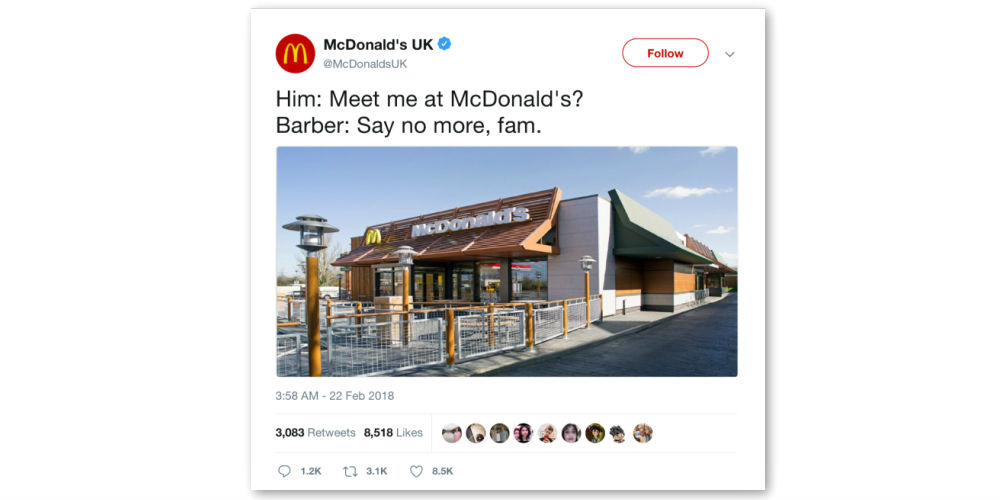
Just like emoticons, memes can also have layers of meaning. These layers of meanings can get you in trouble. You can discover the history of a meme on the know your meme website.
If your company takes itself seriously, or you don’t have a savvy marketing team, don’t use memes in your marketing. You’re likely to get yourself into problems that could be easily avoided.
How to Use GIFs Like a Pro
A GIF is an image file that plays a short video on a continuous loop. There are two types of GIFs. The most well known are the meme style GIFs. This is a video or cartoon clip that normally has a text overlay.
Memes are a great way to convey emotion or make a point. You can see what I mean in this example below.
GIFs are a nice tool to use on social media to reply to customer feedback. They’re easy to create as well, with plenty of free and premium GIF makers available.
More general GIF animations get used a lot in email marketing as well. For example, animated GIFs can be added to an email to draw attention to a special offer, like in the example below.

GIFs can also be used to create countdown timers, which are good for closing offers. Looking at the example above you can see why GIFs have been proven to increase email click through rates, and sales.
You can also use Gifs in content marketing for your website. ProductHunt do this a lot in their email marketing, but they also use it effectively in blog posts. A good example of this is the article on how to run a great product launch on Product Hunt on the Salesflare blog.
The other type of GIF you can create are cinemagraphs. These look a bit like a photo, it’s just one part of the image is moving in an endless loop.
Cinemagraphs are used a lot in online advertising. Like the other examples listed, they can increase click through rate. For example in a split test the ad below had a 75% higher click through rate and a 41% lower cost per click that a still photo.
GIF’s can also be used as an overall theme of a content piece. If you want to find a way to tie Star Wars to Plumbing, you can bet there is a way to do that with GIF’s. Here you’ll see how this company tied SEO to Chuck Norris.
If you are doing content marketing for you brand and it involves any sort of tutorial, then making gifs for each step of the tutorial makes sense as viewing how something is done is so much easier than reading how something is done. You can use a tool like Cloudapp to make gifs of your screen recordings. The ahrefs blog is a great example!

Of course using a GIF in a marketing campaign isn’t a guaranteed formula for success. However, GIFs can have a big impact on the success of a marketing campaign. Here’s a guide to help you in finding relevant GIFs and creating your own, along with a few tips as to how you can use them on social media.
GIFs: What to Watch Out For
There are a few things about GIFs that you should be aware of if you plan to use them online. For starters there’s the file size. A lot of GIFs are between 1-4 MB.
Just to give you a point of comparison, the file size for an optimised blog image is normally a lot less than 300 kb. The big file size is an issue if you plan to use it on your website. It will slow down the page load speed, which could impact your Google search rankings and sales.
For this reason you see GIFs used a lot more in advertising campaigns, or in email, rather than on a blog. This is because the issues with page load speed are managed by third parties (like a Facebook server farm).
The other thing to keep in mind when using GIFs in your marketing campaign is to make sure that your image falls under Fair Use. This is important as you want to avoid any copyright issues.
Conclusion
Hopefully this article has given you a few ideas of how to use GIFs, memes and emoticons in your marketing campaigns. Of course memes, GIFs and emoticons are not going to make a marketing campaign successful. They are tools you can experiment with.
Experiment with the different mediums in your marketing campaigns. See what works for your niche, learn from your mistakes and successes. Now off you go!
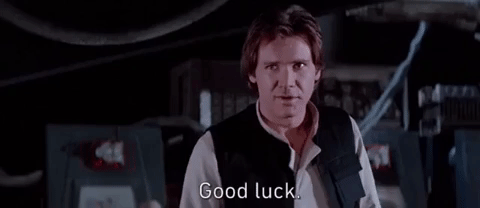
Comments are closed.